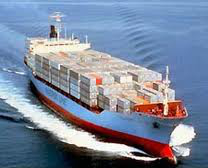 Though research into osmosis continues, a good deal is now known about it.
Though research into osmosis continues, a good deal is now known about it.
The factors that affect it include:
i. The warmer the water, the more likely there is to be osmosis. This follows logically, since warm water is less dense than cold, and so it is more enthusiastic about seeping through the barrier. Incidentally, these porous walls are called semi permeable membranes, and they are in some respects baffling. For instance, if a bag is made from a semi-permeable membrane and filled with water, there will be no drips visible on the outside of the bag – at least for some time. Osmosis does not act like a raging torrent, but like a subtle sneaking snake moving with infinite slowness through tiny holes that are invisible to the naked eye.
ii. The fresher the water, the more likely there is to be osmosis. Again this is obvious, since rainwater is less dense than salt sea water and therefore more eager to do its worst on a fibreglass boat. One consequence of this is that anyone who keeps his boat in a marina with a freshwater stream flowing into it should avoid berths near that stream. Another point that follows from this factor is that the inside of freshwater tanks are likely to have osmosis even when the rest of the vessel that floats in the sea has no trouble. A third factor is that rain on the deck or topsides can cause osmosis even when the underwater parts of the hull are freefrom trouble.
iii. Since osmosis works 24 hours a day all the year round, when the right conditions are present, boats that lie afloat all the year round are more likely to have osmosis than boats that are slipped for the winter. Arguing on from this, boats that are under cover in the dry all winter are less likely to have the trouble than craft stored in the open and that become wet with rain or snow. Thinking further, if a boat has a winter cover made of a waterproof material such as PVC, water will stay trapped between the cover and the hull even when the rest of the boat has been dried by the wind. So where the cover touches the topsides, osmosis can ‘grow’ even when the boat is ashore. If the cover is dark it warms up more than a light-coloured cover when the sun shines on it. This warmth will heat the trapped patches of moisture that consequently insinuate their way through the gel coat and cause osmosis.
iv. Since osmosis is in some respects affected by time, the older the vessel, the more likely she is to have this trouble; and the more winters she has been kept afloat, the more likely she is to have osmosis. If she is hauled out each winter, but very late in the year, with an early launch each spring, she is afloat a large percentage of her life, so osmosis is more likely.
v. Cheap boats tend to be built quickly with low-cost materials. The speed of construction means there may not be enough rolling out and forcing of the liquid resin into the glass mat, so air bubbles are left. These encourage osmosis. Cheap materials in general tend to be more porous, so water gets through more easily and osmosis starts sooner. However, some cheap boats have well-made fibreglass hulls, perhaps fabricated by a different firm from the one that does the final completion; and expensive boats may have hull shells made by inefficient fabricators whose work is not up to the standards of the organisation that does the fitting out.
In conclusion this means that though as a basic rule the cheaper the boat the more likely there is to be osmosis, there are many exceptions to this rule. Some well-known builders have a reputation for osmosis troubles, while some inexpensive builders have the reverse.
Takis Kalogerakos
Marine Underwriter

